An amazing contraption! The sole can be flexed to form an infinite combination of hollow and round radii. Designed to work with 1 5/8" irons so just about any block plane iron could be ground to the radius desired. All brass with a 9" steel sole. Unmarked. The patent papers included with the plane hardly match the tool itself. The plane has no defect and functions quite well.
From the mjdtools website.
A UNIQUE PATTERN MAKERS FLEXIBLE SOLE PLANE as patented by Charles W. Justus of Lima, Ohio on October 6, 1907. In the U.S. Patent specifications, Justus describes the object of his invention as "...to provide a simple, inexpensive, and efficient tool ofthis character which may be used by pattern makers and others for rounding corners and for various other purposes.", as well as "Another object of the invention is to provide a combination-tool of this character in which cutters of various kinds and sizes may be mounted to adapt the tool to a variety of uses." This cast bronze fully functional plane was almost certainly constructed by Justus as a prototype for the type of combination tool using "cutters of various kinds and sizes" that he anticipated as an application for the tool described in U.S. Patent No. 832736. That it never made its way into production was almost certainly a consequence of the complexity of the design and the cost that would be required to produce and assemble a tool of so many parts having such complex adjustment features. The marketing of such a tool would have been compounded by the resistance of pattern makers, who were highly skilled in both wood and metal working, to adopt a "new fangled" tool when the mastery of their trade had required them to learn to be able to perform the same functions using simple tools, many of their own construction. Whatever the case, this extraordinarily complex plane has survived complete and intact. It was accompanied in the collection by a tag noting that it had been made by Justus and that it had previously been part of the Kenneth H. Baughman Museum of Cary, Ohio.
- Gallery
- Description
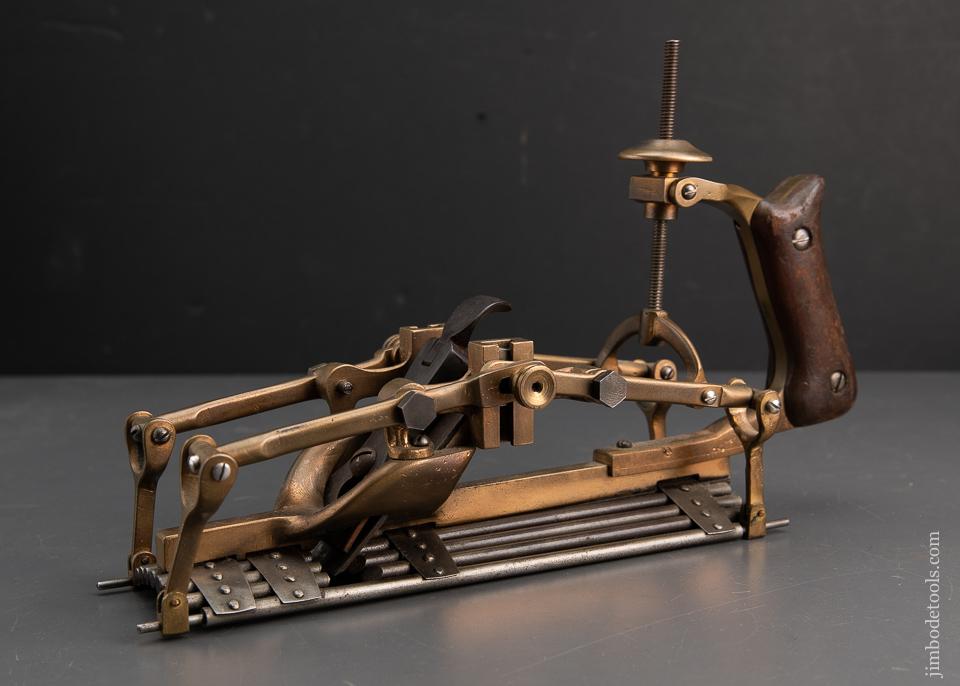
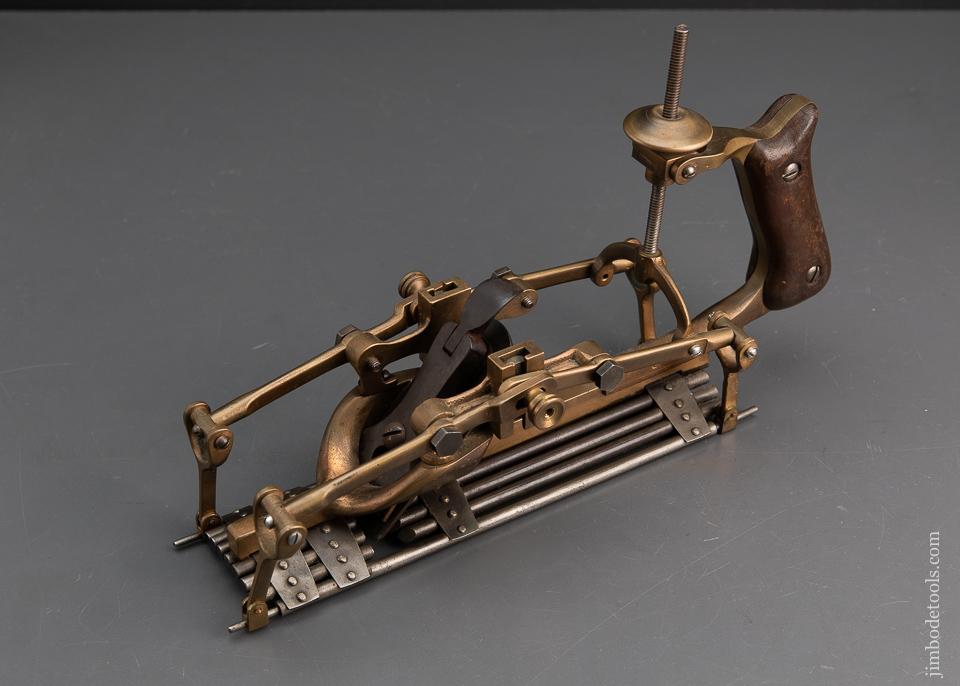
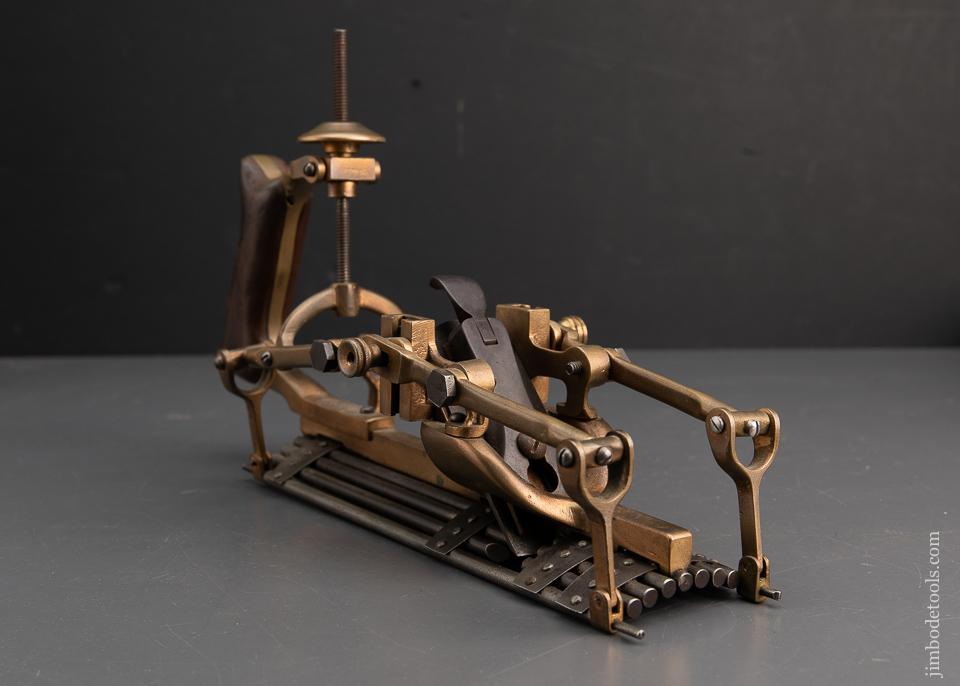
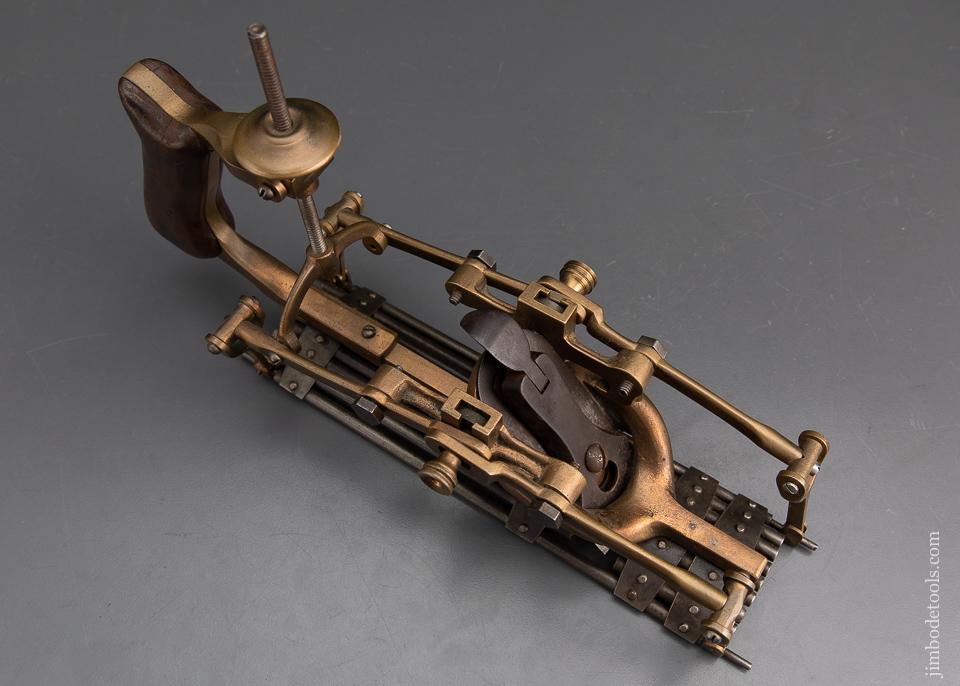
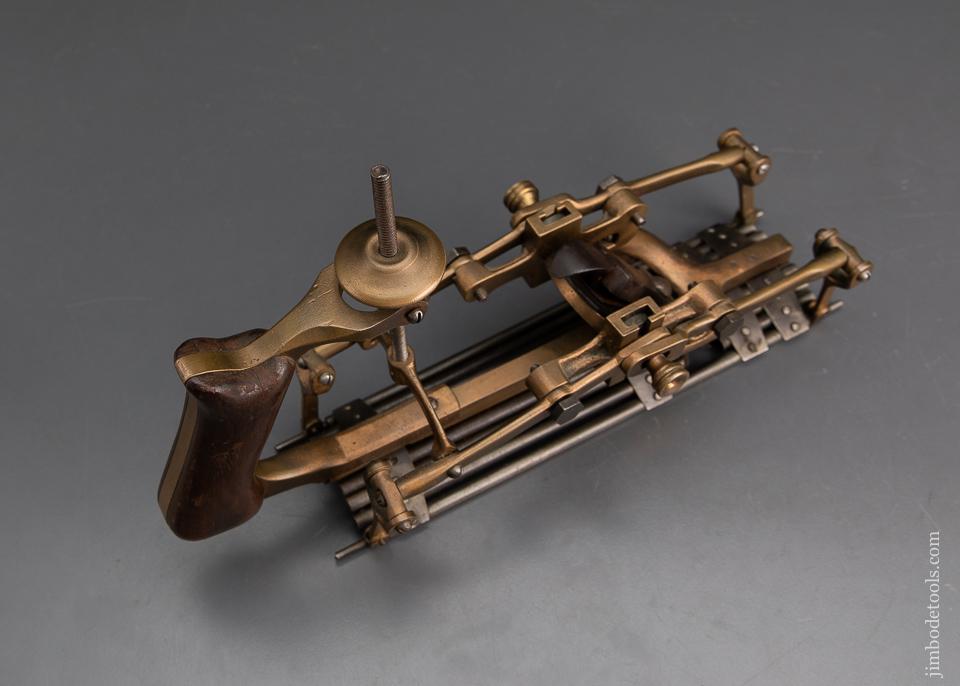
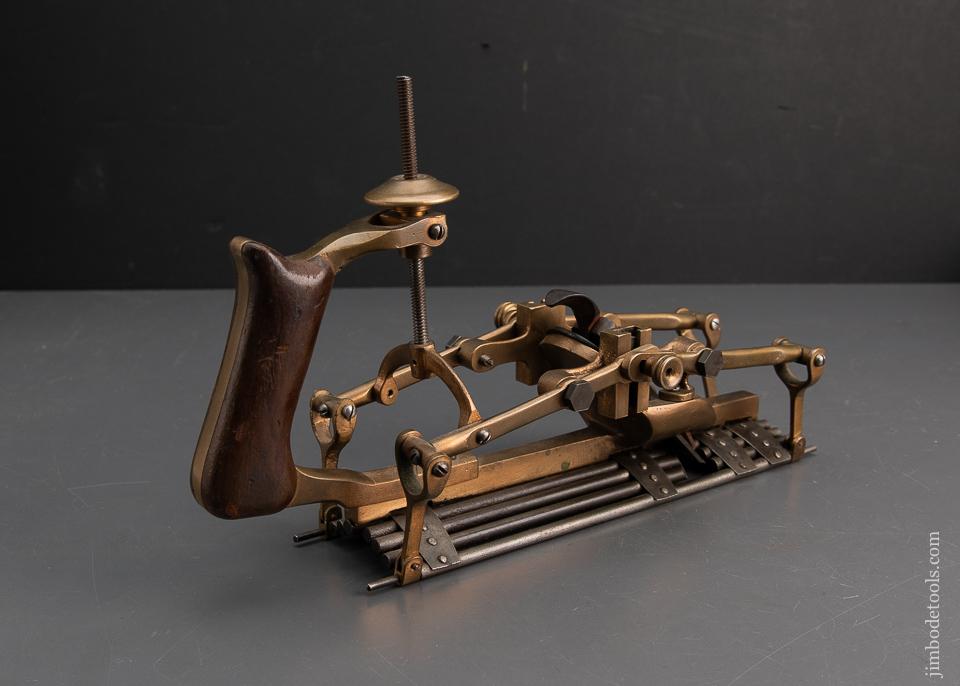
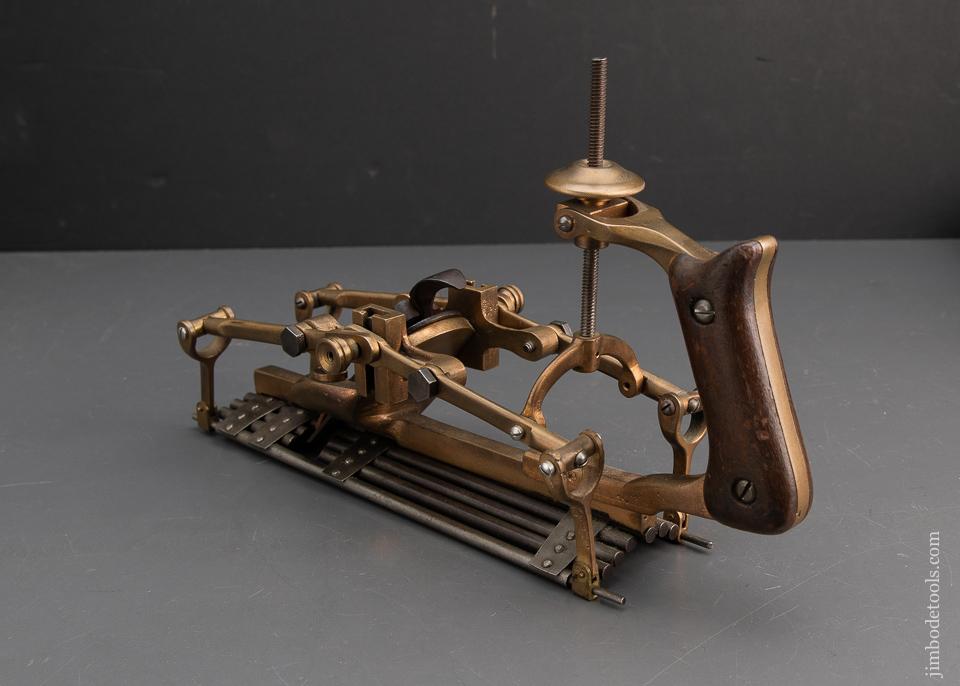
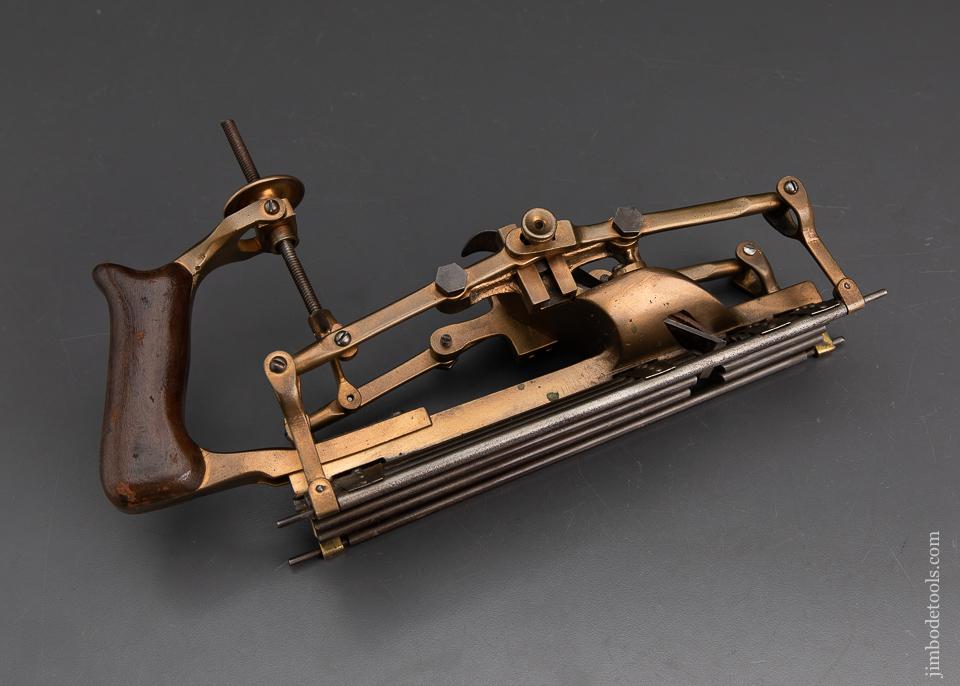
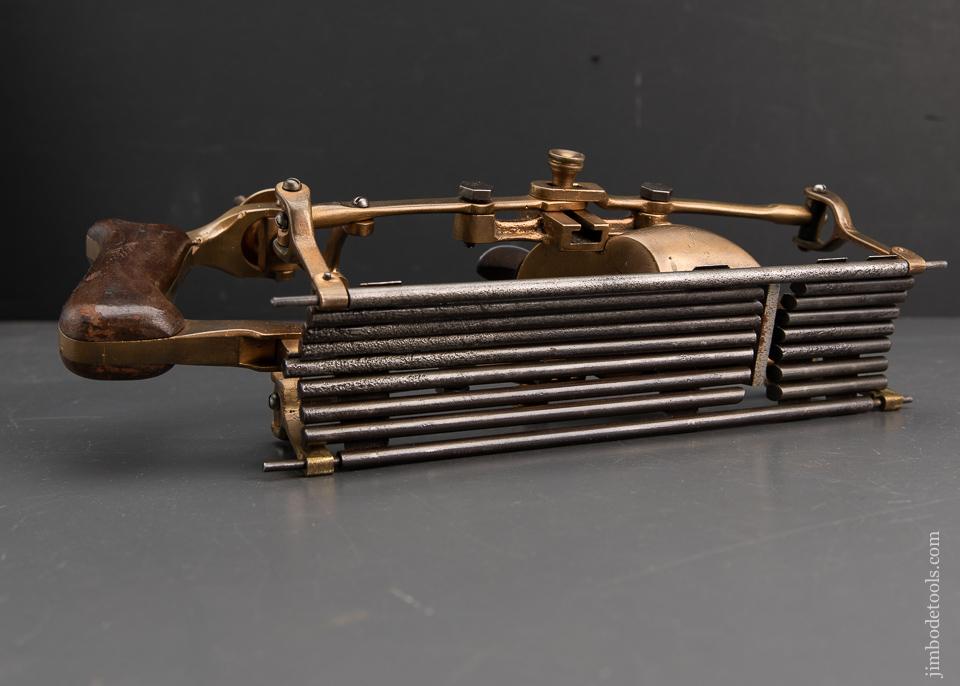
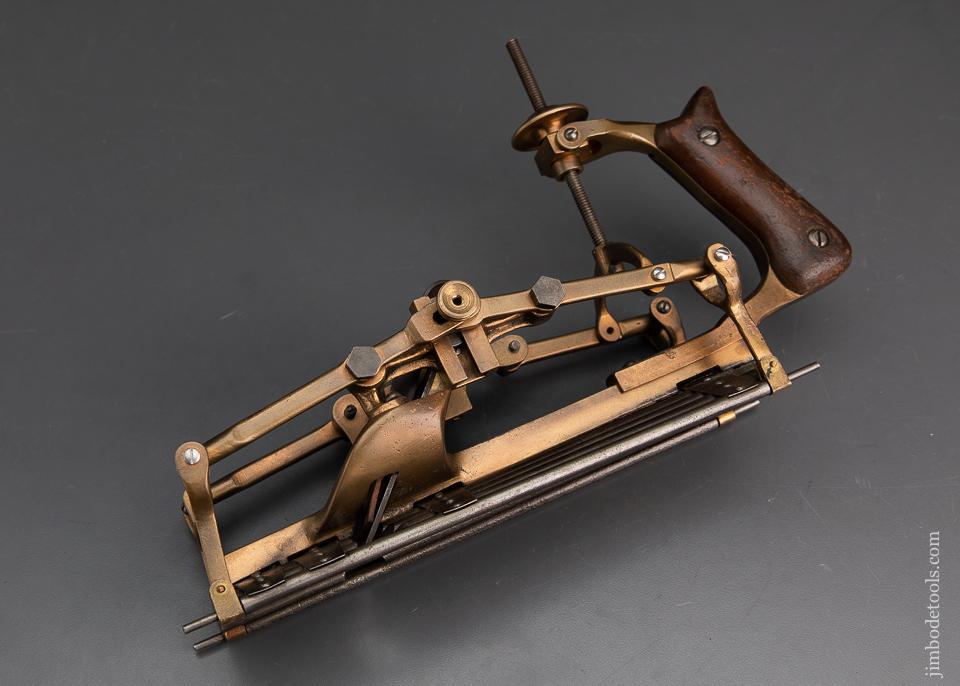
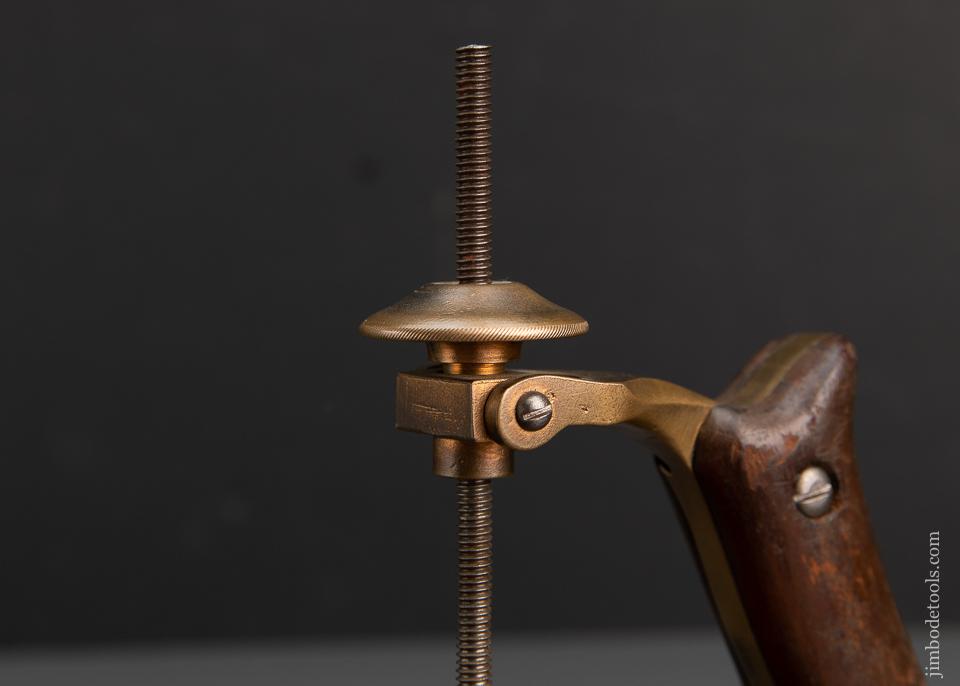
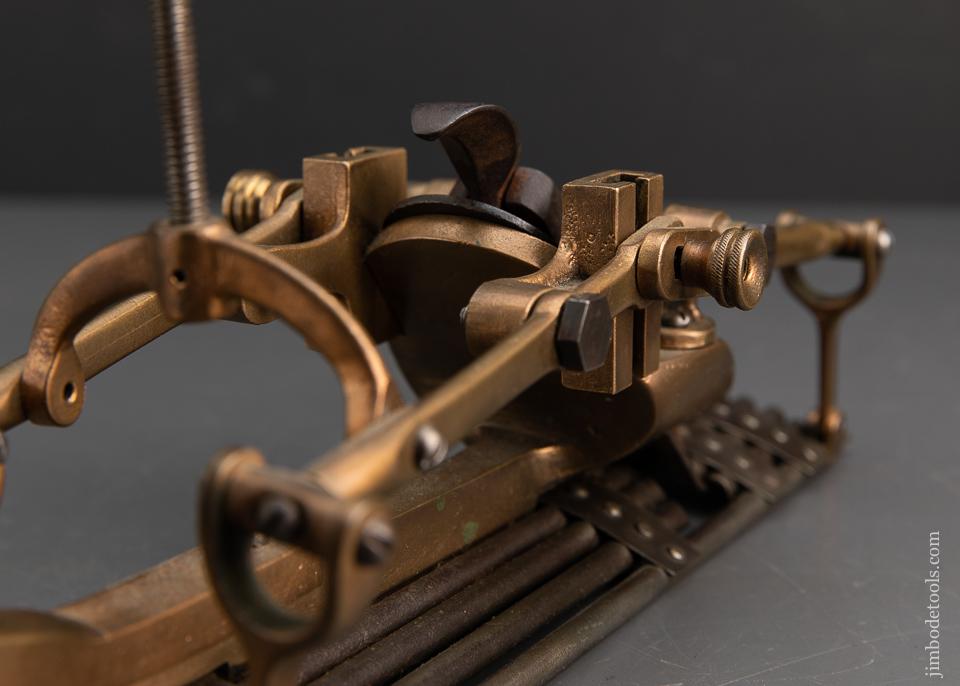
An amazing contraption! The sole can be flexed to form an infinite combination of hollow and round radii. Designed to work with 1 5/8" irons so just about any block plane iron could be ground to the radius desired. All brass with a 9" steel sole. Unmarked. The patent papers included with the plane hardly match the tool itself. The plane has no defect and functions quite well.
From the mjdtools website.
A UNIQUE PATTERN MAKERS FLEXIBLE SOLE PLANE as patented by Charles W. Justus of Lima, Ohio on October 6, 1907. In the U.S. Patent specifications, Justus describes the object of his invention as "...to provide a simple, inexpensive, and efficient tool ofthis character which may be used by pattern makers and others for rounding corners and for various other purposes.", as well as "Another object of the invention is to provide a combination-tool of this character in which cutters of various kinds and sizes may be mounted to adapt the tool to a variety of uses." This cast bronze fully functional plane was almost certainly constructed by Justus as a prototype for the type of combination tool using "cutters of various kinds and sizes" that he anticipated as an application for the tool described in U.S. Patent No. 832736. That it never made its way into production was almost certainly a consequence of the complexity of the design and the cost that would be required to produce and assemble a tool of so many parts having such complex adjustment features. The marketing of such a tool would have been compounded by the resistance of pattern makers, who were highly skilled in both wood and metal working, to adopt a "new fangled" tool when the mastery of their trade had required them to learn to be able to perform the same functions using simple tools, many of their own construction. Whatever the case, this extraordinarily complex plane has survived complete and intact. It was accompanied in the collection by a tag noting that it had been made by Justus and that it had previously been part of the Kenneth H. Baughman Museum of Cary, Ohio.











